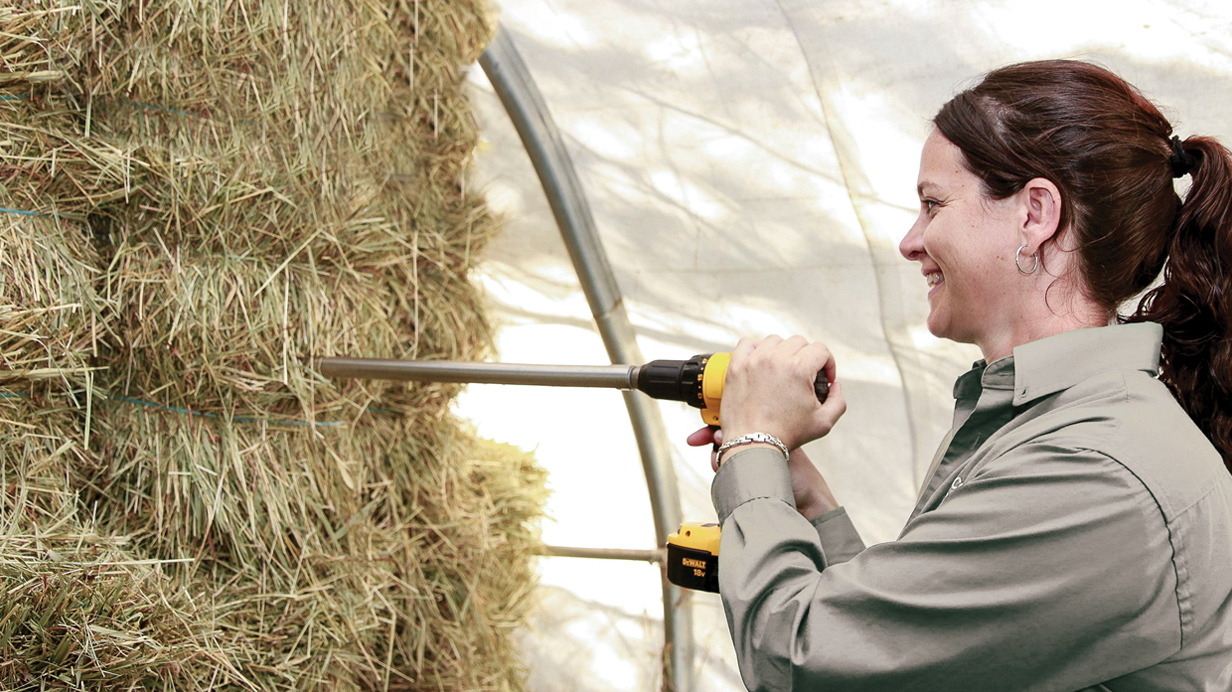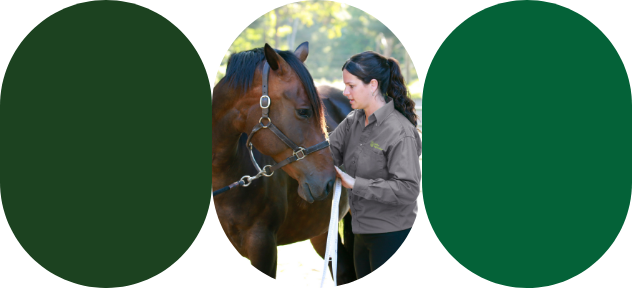Analyze hay to choose the right feed for your horse
Learning how to analyze hay will help you to make informed decisions when buying forage and to build balanced rations based on your horse’s needs. Here’s an overview of how to carry out this essential exercise.
Make observations
1. Observe the colour of the hay
Before you have your hay analyzed, you must first assess it in the simplest way possible—through your senses. Ideally, you should be looking for beautiful greenish forage. Brown hay is often a sign of poor storage or bad weather at harvest.
2. Analyze the composition of the hay
Look for hay that is free of weeds and other impurities (tree leaves, branches, etc.).
3. Check the texture of the hay
Fold a good handful of the hay between your hands. Is it soft or stiff (like straw)? In general, the more mature the hay, the stiffer and more difficult it is to digest.
4. Smell the hay
Does it smell good? Does it smell dusty or mouldy? This last observation is the most important as horses have a very sensitive respiratory system. If the hay passes your sensory assessment, you can then move on to the next step and have it analyzed in a laboratory. If it doesn’t pass, it’s best to find other hay.
Take samples
Certain rules must be followed to ensure that the sample of hay that you send to the laboratory accurately represents your entire hay lot. Firstly, it is recommended that you use a sampling probe designed for this purpose.
Secondly, take several samples. The more samples you take, the more the results will reflect the true value of your hay. If your hay is already in storage, take samples from the entire hayloft to ensure that the whole crop is represented.
Sampling rules must be followed to ensure that laboratory results are as accurate as possible. We therefore recommend that you consult a Sollio Agriculture agri-advisor on the correct procedures for sending samples.
Interpret the results
Once you have received your hay analysis results, it’s time to interpret them. Certain data is key to assessing the nutritional quality of the hay and balancing your horse’s feed program.
The dry matter (DM) content indicates the percentage of hay that is not water, i.e., the percentage that adds nutritional value to the ration. The higher the DM, the better the hay will keep and the lower the risk of dust and mould.
The percentage of crude protein (CP) varies based on the maturity and composition of the hay. Hay from legumes (clovers, alfalfa) generally contains more protein than hay from grasses (timothy, bromegrass, orchardgrass, etc.). This is also true of less mature hay, such as second-cut hay, which is harvested at a less advanced stage of development. A horse’s individual CP requirements will depend on its age, weight, physiological stage, and activity level. Broodmares, growing foals, and very active horses have higher protein requirements. Care should be taken to ensure that each horse is fed appropriate hay.
Examples of appropriate forage for different types of horses.
The percentages of acid detergent fibre (ADF) and neutral detergent fibre (NDF) provide valuable information about the digestibility and palatability of the forage. In general, the more mature the hay is, the higher these values are and the more nutritional value is compromised.
Hay analyses provide information on the percentage of macrominerals such as calcium, phosphorus, magnesium, and potassium. Hay can also be analyzed for trace minerals such as zinc and copper. As a reminder, forage in Québec is deficient in selenium, a trace mineral that is essential for horses.
Non-structural carbohydrates (NSCs), particularly ethanol-soluble carbohydrates (sugars) and starch, influence the insulin response and can affect the balance of a horse’s intestinal flora. NSCs should therefore be closely monitored in horses with a history of laminitis or insulin resistance.
Lastly, the percentage of digestible energy (DE) indicates the caloric value of the hay. The higher the DE, the higher the caloric value of the hay.
Your sensory assessment of hay quality is just as important as the laboratory analysis. Always remember to do both when buying forage for your horse.


